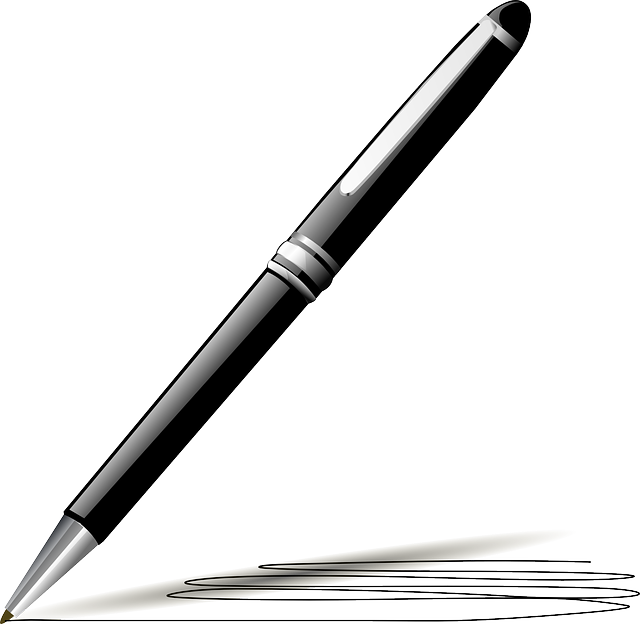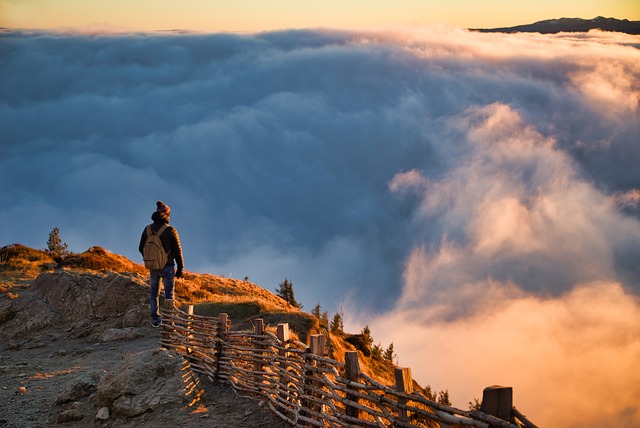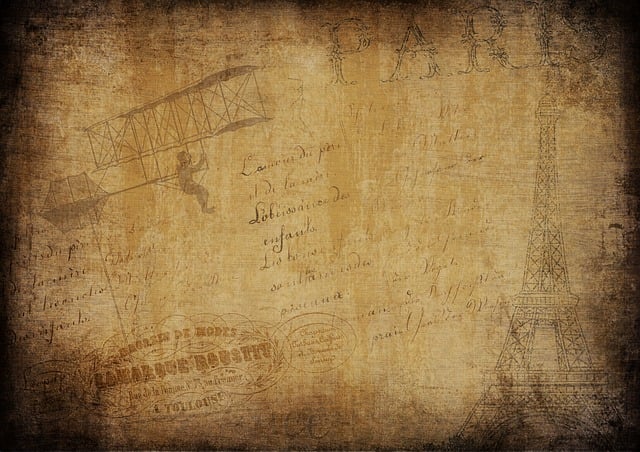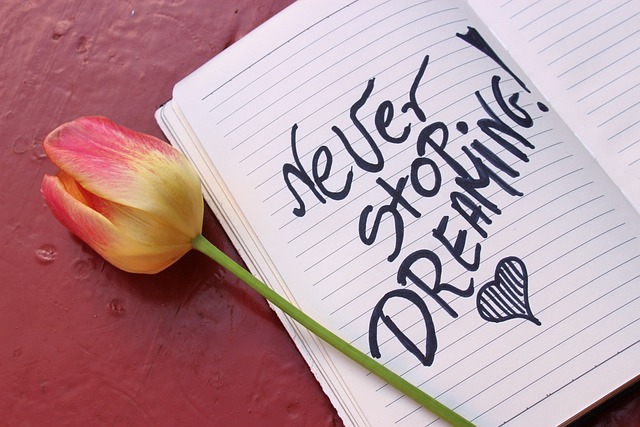Have you ever wondered what it would feel like to be an object, to experience the world from a whole new perspective? Can you imagine the stories that could be woven by everyday items we often take for granted? From a dusty old book to a gleaming silver spoon, each object holds a wealth of untapped potential for creative exploration. In this article, we delve into the fascinating realm of object writing prompts, a captivating technique that breathes life into inanimate objects. So, prepare to embark on a literary adventure, as we unlock the magic hidden within the everyday things that surround us.
Contents
- Unlocking Creativity with Object Writing Prompts
- Immerse Yourself in the World of Inanimate Objects
- Unleashing the Power of Observation: Tips for Effective Object Writing
- Breathing Life into Inanimate Objects: Techniques for Vivid Descriptions
- From Mundane to Extraordinary: Transforming Everyday Objects through Object Writing
- Crafting Compelling Narratives: How Object Writing Prompts Enhance Storytelling
- A Window into Emotion: Exploring the Depths of Feelings through Object Writing
- Frequently Asked Questions
- The Conclusion
Unlocking Creativity with Object Writing Prompts
If you’re looking for a fun and effective way to boost your creativity, then object writing prompts might just be the perfect solution! Object writing prompts are a powerful tool that can help you unlock your imagination and inspire fresh ideas. By focusing on specific objects and using them as a catalyst for writing, you can tap into a whole new world of creativity.
So, how does it work? It’s simple! Choose an object, any object that catches your eye or piques your curiosity, and give yourself a set amount of time to write freely about it. Let your mind wander, exploring the object from every angle imaginable. Describe its appearance, texture, smell, and any emotions or memories it evokes. Dive deep into the senses, uncovering hidden details that might not have been apparent at first glance. The goal is to let the object’s essence inspire you, leading to a flood of ideas that can be used in various creative endeavors, such as writing stories, painting, or even composing music.
Immerse Yourself in the World of Inanimate Objects
Welcome to a fascinating journey where we explore the hidden life of inanimate objects. Prepare to be amazed as we delve into the extraordinary stories behind everyday items, revealing their unique histories and surprising secrets. From timeless antiques to cutting-edge technology, this blog will take you on an adventure that will make you see the world in a whole new light.
Join us as we unlock the enchanting mysteries of objects that surround us. Discover the extraordinary tales of forgotten artifacts found in dusty attics or delve into the sophisticated design processes that bring state-of-the-art gadgets to life. Learn how these objects shape our lives, culture, and even our own personal identities. From the intricate craftsmanship of handmade masterpieces to the dazzling innovations of modern engineering, we will explore the intricate details that make these objects so captivating.
- Uncovering the Untold: Delve into the intriguing histories of everyday objects that have shaped our society.
- A Window into Creativity: Gain insight into the minds of the passionate designers and craftsmen who bring these objects to life.
- Unexpected Connections: Discover the surprising ways these inanimate objects have influenced human culture and interaction.
- Curious Collections: Explore diverse collections that showcase the incredible diversity and global impact of inanimate objects.
Are you ready to immerse yourself in a world where objects speak volumes? Let’s embark on this extraordinary journey together!
Unleashing the Power of Observation: Tips for Effective Object Writing
Observation is a truly powerful tool for writers, allowing them to see and capture the world around them with vivid detail. To unleash this power, mastering the technique of object writing is essential. Object writing involves focusing your attention on an object or scene, and then using all of your senses to describe it in rich, evocative detail. Here are some tips to help you become more effective at object writing:
- Choose your object wisely: Select an object that is meaningful to you or piques your curiosity. It could be anything from a childhood toy to a random item you find in a thrift store. The key is to ensure that it sparks your imagination and creates an emotional connection.
- Engage all your senses: When you begin describing your chosen object, don’t just focus on what it looks like. Use all of your senses to paint a complete picture. Describe how the object smells, tastes, sounds, and even how it feels when you touch it. This sensory immersion will bring life and authenticity to your writing.
- Set a timer and write freely: To fully immerse yourself in the object writing process, set a timer for 10-15 minutes and let your thoughts flow freely. Don’t worry about grammar or punctuation; just let the words pour out without any self-judgment. This time constraint encourages you to write instinctively, capturing the essence of the object without overthinking.
Remember, effective object writing is about more than just describing an object; it is about tapping into your emotions, memories, and sensations. It’s about using your observation skills to transport your readers to a specific moment or place. So, embrace your curiosity, flex your descriptive muscles, and let the power of observation enrich your writing.
Breathing Life into Inanimate Objects: Techniques for Vivid Descriptions
When it comes to writing vivid descriptions, one powerful technique is to breathe life into inanimate objects. By doing so, you can engage your readers’ senses and create a more immersive reading experience. Here are some techniques that can help you bring your descriptions to life:
- Use sensory details: To make your descriptions more vivid, incorporate sensory language that appeals to sight, sound, smell, taste, and touch. For example, instead of saying “the chair was old,” you could say “the creaking wooden chair emitted a nostalgic scent, inviting you to sink into its weathered embrace.”
- Personify objects: Give life and human-like qualities to inanimate objects to make them relatable. This literary device can provide a fresh perspective and draw readers in. For instance, instead of describing a storm as “intense,” you might say ”the furious storm roared through the night, unleashing its wrath upon the trembling earth.”
- Employ metaphors and similes: Compare objects to something else to create vivid images in your readers’ minds. By painting a picture through comparison, you can capture their attention and help them visualize scenes in greater detail. For example, you could describe a beautiful sunset as “a fiery kaleidoscope melting into the horizon like a golden waterfall.”
Breathing life into inanimate objects is a powerful writing technique that can elevate your descriptions and captivate your readers. By utilizing sensory details, personification, and metaphors/similes, you can transform ordinary objects into compelling characters, enhancing the overall richness of your prose. So, next time you sit down to write, unleash your imagination and let your words breathe life into the world around you.
From Mundane to Extraordinary: Transforming Everyday Objects through Object Writing
Writing has the power to breathe life into the seemingly ordinary, transforming mundane objects into extraordinary vessels of creativity and imagination. Object writing, a technique employed by writers, allows them to delve deep into the essence of everyday objects, uncovering hidden emotions and vivid details. Through this practice, writers are able to unveil a new perspective, bringing forth a unique story that might have otherwise gone unnoticed.
Object writing encourages a writer to observe the object with acute precision, stimulating all five senses to create a rich and immersive experience for the reader. The process involves setting a timer and focusing intensely on a single object, describing it within a specified time frame. The goal is to capture the essence of the object in words, exploring its texture, color, sound, smell, and taste. By incorporating sensory details, the writer can transport the reader into the world of the object, evoking emotions and sparking imagination.
- Expanding creativity: Object writing propels writers to think beyond the surface level, encouraging them to explore the hidden stories objects carry, whether they are as ordinary as a pencil or as eclectic as a vintage typewriter.
- Developing observation skills: By truly observing the object, writers hone their ability to notice intricate details and nuances that may often go unnoticed. This enhances their overall observational skills and attention to detail.
- Fostering connections: Object writing helps readers relate to everyday objects on a deeper level, as writers capture the essence and the emotions connected to these objects. It fosters a sense of familiarity and emotional connection between readers and the object being described.
Through the transformative practice of object writing, writers have the ability to turn the ordinary into the extraordinary, inviting readers into their world of sensory experiences and emotions. By employing vivid descriptions and focusing on the often-overlooked aspects of everyday objects, object writing becomes an insightful tool that expands creativity, enhances observation skills, and fosters a profound connection between readers and the objects that surround them.
Crafting Compelling Narratives: How Object Writing Prompts Enhance Storytelling
When it comes to storytelling, crafting compelling narratives is essential to captivate readers and immerse them in the world of your story. One powerful technique that can help enhance storytelling is using object writing prompts. Object writing prompts are prompts that encourage writers to vividly describe an object using their senses, allowing them to hone their descriptive skills and create more engaging stories.
By using object writing prompts, writers can add depth and richness to their narratives. Here’s how:
- Improved sensory details: Object writing prompts force writers to pay attention to sensory details such as sight, sound, smell, taste, and touch. This practice helps create a more vivid and immersive experience for the reader.
- Enhanced character development: Objects can reveal a lot about a character’s past, personality, or emotional state. By incorporating object descriptions, writers can provide subtle insights into their characters, making them more relatable and believable.
- Enriched settings: Describing objects in a specific setting can help establish the atmosphere and context of a scene. Using object writing prompts can guide writers to create visually stunning and atmospheric settings that transport readers into their story worlds.
Engaging and compelling storytelling requires the ability to paint vivid pictures in the minds of readers. Object writing prompts provide a valuable tool for writers to hone their descriptive skills, creating immersive narratives that captivate and resonate with audiences.
A Window into Emotion: Exploring the Depths of Feelings through Object Writing
Object writing is an artistic technique that allows us to explore the intricate tapestry of human emotions in a unique and compelling way. By using our senses to vividly describe everyday objects, we can tap into the depths of our feelings and uncover hidden layers of meaning. Through this window into emotion, we can delve into the raw essence of our experiences and bring them to life through words.
Imagine holding a small porcelain teacup in your hands. As you gently feel the smoothness of its surface, memories of warmth and comfort flood your mind. The fragrant aroma of freshly brewed tea wafts through the air, evoking a sense of tranquility and serenity. The delicate sound of clinking saucers transports you to a cozy café, where endless conversations unfolded and heartfelt connections were forged. In this moment, the teacup becomes a vessel for not only tea but also for empathy, nostalgia, and the bittersweet taste of passing time.
- Object writing offers an opportunity to delve deeper into our emotions.
- It enables us to explore the intricate connections between everyday objects and our feelings.
- Through vivid descriptions, we can bring our experiences to life.
- Object writing acts as a window into the essence of our memories and sensations.
By practicing object writing, we can unlock the power of observation, honing our ability to perceive the world with heightened awareness. The simple act of examining an object can reveal the vast array of emotions that lie within us, waiting to be explored. Through this exploration, we gain insights into ourselves and others, forging a deeper connection to the human experience. So, let us embark on this creative journey and peer through the window into our emotions, one object at a time.
Frequently Asked Questions
Q: What are object writing prompts?
A: Object writing prompts are creative exercises that encourage writers to bring everyday inanimate objects to life through vivid descriptions and sensory details.
Q: How do object writing prompts work?
A: By choosing an object, such as a pen, a cup, or a photograph, writers focus on exploring its characteristics and immersing themselves in its world. This exercise helps develop the writer’s ability to engage readers by evoking emotions and creating a vivid experience through words.
Q: What is the purpose of using object writing prompts?
A: Object writing prompts help writers hone their descriptive skills, sharpen their observation abilities, and foster their creativity. By bringing inanimate objects to life, writers can enhance their storytelling and engage readers on a deeper level.
Q: Can object writing prompts be helpful for writers of all levels?
A: Absolutely! Object writing prompts are beneficial for writers at any stage of their journey. They provide a challenge for beginners to develop their descriptive skills and offer seasoned writers a fresh perspective or a spark of inspiration.
Q: How can object writing prompts help me improve as a writer?
A: Object writing prompts encourage you to pay attention to the often overlooked beauty and significance of ordinary objects. By practicing detailed descriptions and vivid imagery, you’ll enhance your ability to captivate readers and make your writing more immersive.
Q: Can you provide an example of an object writing prompt?
A: Certainly! Here’s a writing prompt: “Choose a worn-out pair of shoes and write a detailed description of how they look, feel, and the stories they hold within their soles.”
Q: Are there any tips to make the most of object writing prompts?
A: Absolutely! Firstly, start by selecting an object that speaks to you. Then, use all your senses to explore its characteristics. Focus on incorporating specific details, textures, and emotional connections. Finally, remember to set a time limit for each prompt to keep you focused and avoid overthinking.
Q: Can object writing prompts be used for other forms of writing, such as poetry?
A: Absolutely! Object writing prompts can be an excellent tool for poets as well. They encourage the use of vivid and imaginative language, enabling poets to infuse deeper meaning and evoke emotions within their work.
Q: Are there any resources available for finding object writing prompts?
A: Yes, there are numerous websites, blogs, and books dedicated to providing object writing prompts. Additionally, you can create your own prompts by simply looking around your immediate surroundings and selecting an object that catches your attention. Let your creativity guide you!
The Conclusion
Incorporating object writing prompts into your creative practice can bring a new perspective and vitality to your writing.






